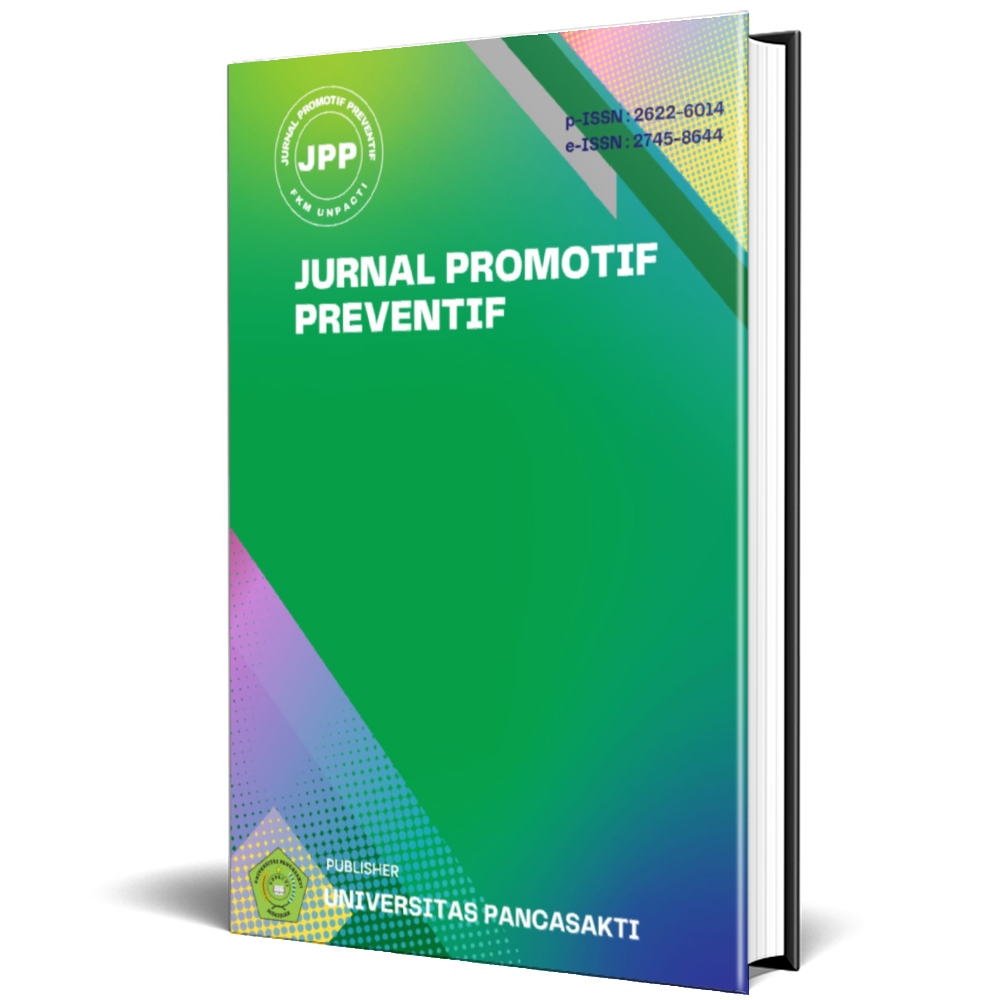Dampak Integrasi Teknologi Informasi dan Clinical Pathway terhadap Efisiensi Operasional di Rumah Sakit X: Studi Mixed-Methods
Abstract
Efisiensi operasional merupakan isu strategis bagi rumah sakit di tengah meningkatnya tuntutan pelayanan kesehatan berkualitas. Integrasi teknologi informasi dan clinical pathway dipandang potensial untuk meningkatkan efisiensi, meskipun hasil implementasinya belum konsisten. Penelitian ini bertujuan mengevaluasi dampak integrasi tersebut terhadap efisiensi operasional di Rumah Sakit X dengan desain mixed-methods. Data dikumpulkan melalui wawancara mendalam dengan informan kunci, observasi langsung, serta analisis data sekunder operasional. Tiga indikator efisiensi dianalisis, yaitu waktu tunggu pasien, lama rawat inap, dan tingkat pemanfaatan sumber daya manusia (SDM) medis. Uji ANOVA dan regresi linier digunakan untuk menilai signifikansi perubahan indikator sebelum dan sesudah integrasi, dengan konfirmasi validitas melalui uji normalitas, homogenitas varians, dan autokorelasi. Hasil menunjukkan penurunan signifikan pada waktu tunggu pasien dan lama rawat inap, serta peningkatan efisiensi dalam pemanfaatan tenaga medis pasca integrasi. Temuan ini menegaskan bahwa integrasi teknologi informasi dan clinical pathway berkontribusi positif terhadap efisiensi operasional, sekaligus menyoroti pentingnya pendekatan terintegrasi dalam pengelolaan sistem pelayanan rumah sakit berbasis data dan bukti empiris.
References
Boudanga, Z., benhadou, S., & Medromi, H. (2023). An innovative medical waste management system in a smart city using XAI and vehicle routing optimization. F1000Research, 12, 1060. https://doi.org/10.12688/f1000research.138867.1
Dameria, K., & Jane, O. (2025). Konteks Transformasi Digital di Sektor Usaha Kesehatan. In Jurnal Mahasiswa Ekonomi & Bisnis (Vol. 5, Issue 1).
de Reuver, R., Van de Voorde, K., & Kilroy, S. (2021). When do bundles of high-performance work systems reduce employee absenteeism? The moderating role of workload. International Journal of Human Resource Management, 32(13), 2889–2909. https://doi.org/10.1080/09585192.2019.1616594
Ditia Prawira, D., & Alijoyo, F. A. (2024). Business Process Innovation in the Digital Era: Implications for Organizational Structure and Performance in the Healthcare Sector. Journal of Education and Technology Development, 2(1), 91–103. https://myjournal.or.id/index.php/JETD
Haleem, A., Javaid, M., Pratap Singh, R., & Suman, R. (2022). Medical 4.0 technologies for healthcare: Features, capabilities, and applications. In Internet of Things and Cyber-Physical Systems (Vol. 2, pp. 12–30). KeAi Communications Co. https://doi.org/10.1016/j.iotcps.2022.04.001
Hazarika, I. (2020). Artificial intelligence: Opportunities and implications for the health workforce. International Health, 12(4), 241–245. https://doi.org/10.1093/INTHEALTH/IHAA007
Javaid, M., Haleem, A., Pratap Singh, R., Suman, R., & Rab, S. (2022). Significance of machine learning in healthcare: Features, pillars and applications. International Journal of Intelligent Networks, 3, 58–73. https://doi.org/10.1016/j.ijin.2022.05.002
Kristianti, T., Sriwijaya, S. B., & Banten, P. N. (2025). Evaluation of Hospital Service Quality with the SERVQUAL Method Approach and Quality Function Deployment (QFD). International Journal of Health, Economics, and Social Sciences (IJHESS), 7(2), 866–874. https://doi.org/10.56338/ijhess.v7i2.7379
Li, E., Clarke, J., Neves, A. L., Ashrafian, H., & Darzi, A. (2021). Electronic Health Records, Interoperability and Patient Safety in Health Systems of High-income Countries: A Systematic Review Protocol. In BMJ Open (Vol. 11, Issue 7). BMJ Publishing Group. https://doi.org/10.1136/bmjopen-2020-044941
Maki, O., Alshaikhli, M., Gunduz, M., Naji, K. K., & Abdulwahed, M. (2022). Development of Digitalization Road Map for Healthcare Facility Management. IEEE Access, 10, 14450–14462. https://doi.org/10.1109/ACCESS.2022.3146341
Mao, H., Zhang, T., & Tang, Q. (2021). Research framework for determining how artificial intelligence enables information technology service management for business model resilience. In Sustainability (Switzerland) (Vol. 13, Issue 20). MDPI. https://doi.org/10.3390/su132011496
MARDIATI, D., & SAPUTRA, Y. (2025). Implementasi Sistem Informasi Manajemen Klinik Menggunakan Metode Black Box Testing. Jurnal Informatika Dan Teknik Elektro Terapan, 13(1). https://doi.org/10.23960/jitet.v13i1.6015
Munoz-Gama, J., Martin, N., Fernandez-Llatas, C., Johnson, O. A., Sepúlveda, M., Helm, E., Galvez-Yanjari, V., Rojas, E., Martinez-Millana, A., Aloini, D., Amantea, I. A., Andrews, R., Arias, M., Beerepoot, I., Benevento, E., Burattin, A., Capurro, D., Carmona, J., Comuzzi, M., … Zerbato, F. (2022). Process mining for healthcare: Characteristics and challenges. Journal of Biomedical Informatics, 127. https://doi.org/10.1016/j.jbi.2022.103994
Mutebi, M., Anderson, B. O., Duggan, C., Adebamowo, C., Agarwal, G., Ali, Z., Bird, P., Bourque, J. M., DeBoer, R., Gebrim, L. H., Masetti, R., Masood, S., Menon, M., Nakigudde, G., Ng’ang’a, A., Niyonzima, N., Rositch, A. F., Unger-Saldaña, K., Villarreal-Garza, C., … Eniu, A. (2020). Breast cancer treatment: A phased approach to implementation. Cancer, 126(S10), 2365–2378. https://doi.org/10.1002/cncr.32910
Nyawira, L., Tsofa, B., Musiega, A., Munywoki, J., Njuguna, R. G., Hanson, K., Mulwa, A., Molyneux, S., Maina, I., Normand, C., Jemutai, J., & Barasa, E. (2022). Management of human resources for health: implications for health systems efficiency in Kenya. BMC Health Services Research, 22(1). https://doi.org/10.1186/s12913-022-08432-1
Platz, T. (2019). Evidence-Based Guidelines and Clinical Pathways in Stroke Rehabilitation—An International Perspective. In Frontiers in Neurology (Vol. 10). Frontiers Media S.A. https://doi.org/10.3389/fneur.2019.00200
Pottle, J. (2019). EDUCATION AND TRAINING Virtual reality and the transformation of medical education. In Future Healthcare Journal (Vol. 6).
Senbekov, M., Saliev, T., Bukeyeva, Z., Almabayeva, A., Zhanaliyeva, M., Aitenova, N., Toishibekov, Y., & Fakhradiyev, I. (2020). The recent progress and applications of digital technologies in healthcare: A review. In International Journal of Telemedicine and Applications (Vol. 2020). Hindawi Limited. https://doi.org/10.1155/2020/8830200
Sheikh, A., Anderson, M., Albala, S., Casadei, B., Franklin, B. D., Richards, M., Taylor, D., Tibble, H., & Mossialos, E. (2021). Health information technology and digital innovation for national learning health and care systems. In The Lancet Digital Health (Vol. 3, Issue 6, pp. e383–e396). Elsevier Ltd. https://doi.org/10.1016/S2589-7500(21)00005-4
Ștefan, A. M., Rusu, N. R., Ovreiu, E., & Ciuc, M. (2024). Empowering Healthcare: A Comprehensive Guide to Implementing a Robust Medical Information System—Components, Benefits, Objectives, Evaluation Criteria, and Seamless Deployment Strategies. Applied System Innovation, 7(3). https://doi.org/10.3390/asi7030051
Torab-Miandoab, A., Samad-Soltani, T., Jodati, A., & Rezaei-Hachesu, P. (2023). Interoperability of heterogeneous health information systems: a systematic literature review. BMC Medical Informatics and Decision Making, 23(1). https://doi.org/10.1186/s12911-023-02115-5
Copyright (c) 2025 Raafika Studiviani Dwi Binuko; Nida Faradisa Fauziyah, Asri AlFajri, Budi Hernawan, Hasna Nurwina Syifa

This work is licensed under a Creative Commons Attribution-NonCommercial-ShareAlike 4.0 International License.


1.png)







